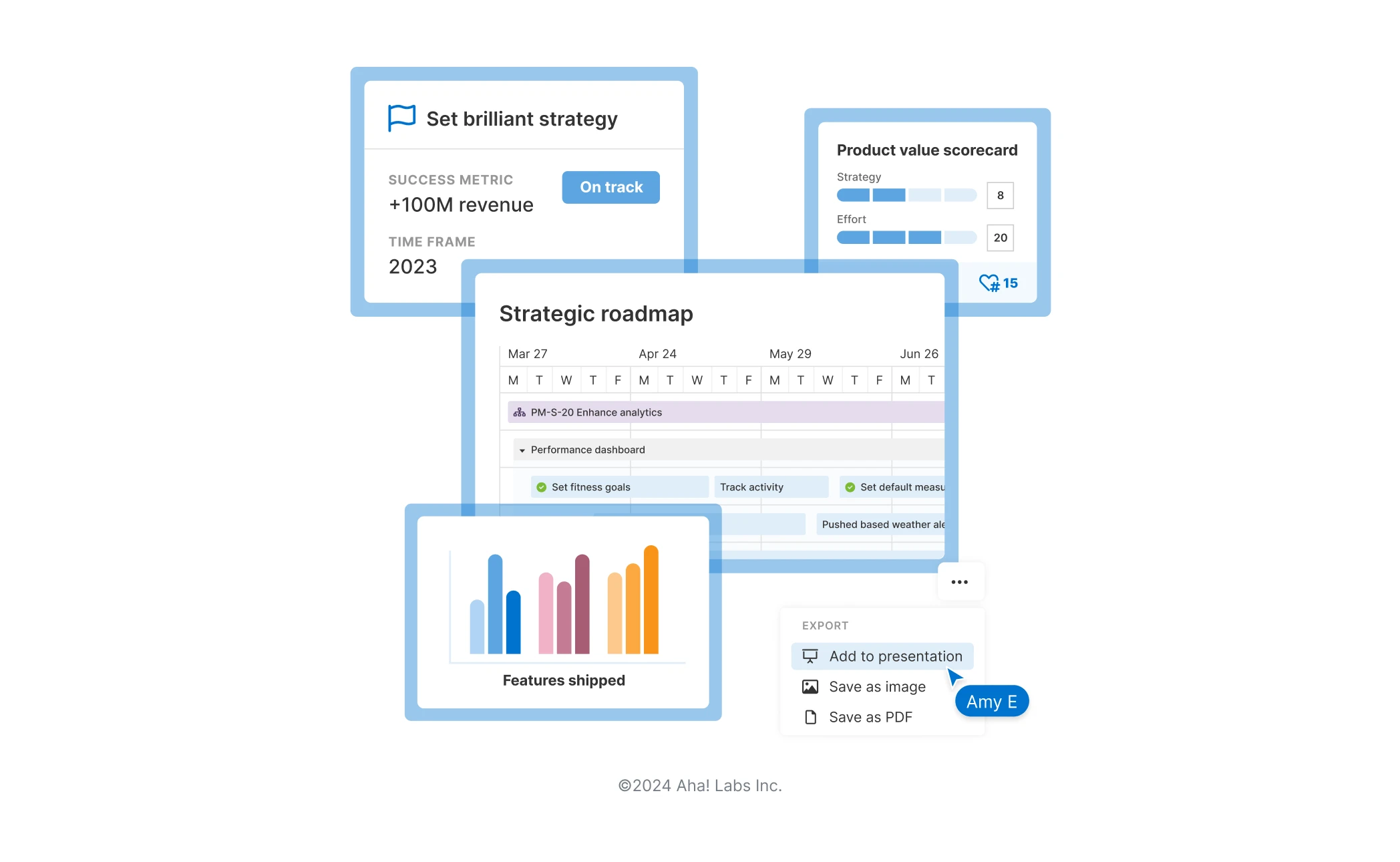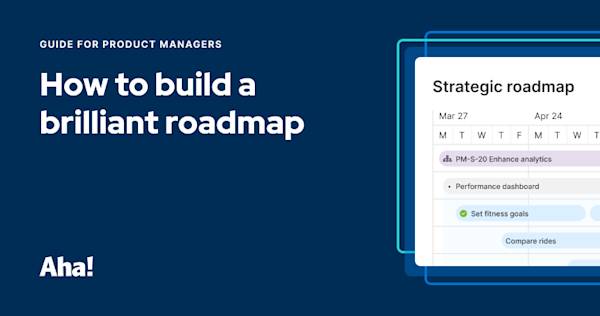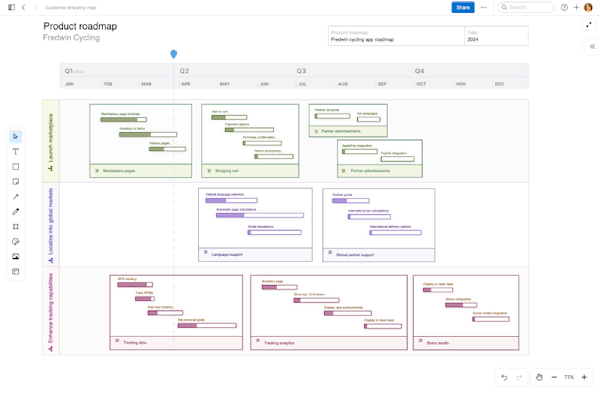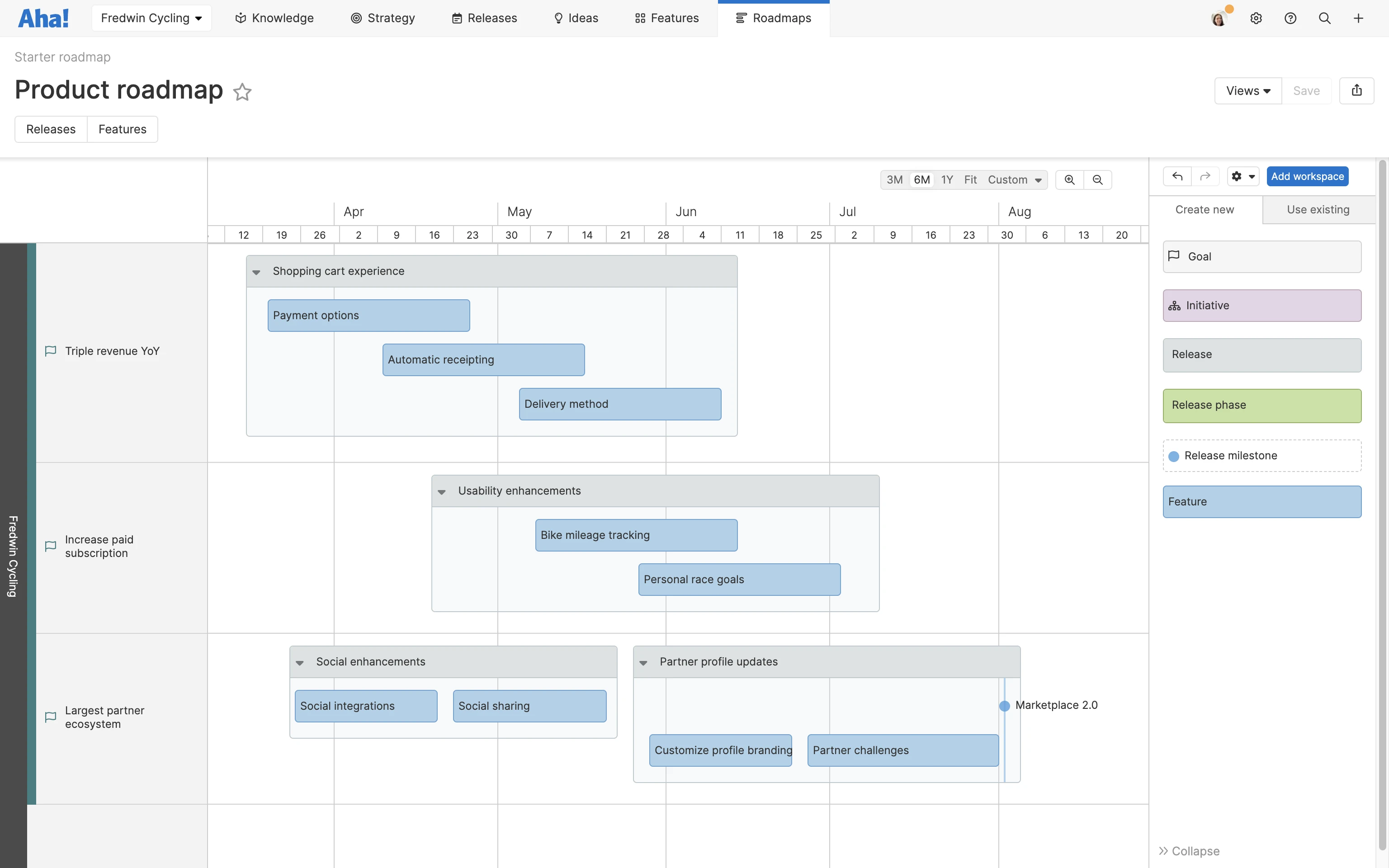What is roadmap software?
Last updated: September 2024
How do you build a successful product? The product development process starts with a breakthrough idea to solve a real problem and a deep understanding of the customers you serve. Product managers define the product vision — why you are building the product and the direction you are headed. Then, you set strategic goals and a detailed plan for achieving them.
Your product roadmap tool visualizes that plan: what will get built, when it will be done, and how the work will help you reach your goals. A roadmap helps your product team stay focused on the work that matters most and communicates strategy, new features, timing, and dependencies to the broader organization.

Build a product roadmap using Aha! Roadmaps. Sign up for a trial.
A complete product roadmap tool like Aha! Roadmaps provides a framework that makes it easy to set and share product strategy. You can use one tool to create goals and initiatives, collaborate on product plans, prioritize features, and quickly build visual timelines for different audiences. By linking every release and feature to the goals and initiatives they support, the team can better understand how well you are delivering against your set strategy.
Yes — we build roadmapping software here at Aha! and are talking about its importance. We are admittedly biased. But whether or not you choose Aha! Roadmaps, the value of using a product roadmapping tool is undeniable. The bottom line? Manual spreadsheets as product roadmaps have got to go.
Jump ahead to explore any section in this article:
What is product roadmapping software?
Product roadmapping software helps product teams refine ideas and add structure to them through releases, features, and requirements. Using a roadmap tool to visualize your product plans helps you quickly communicate to stakeholders and cross-functional teams when you will deliver new functionality to customers.
Roadmapping software is one of several tools within a larger product development software category. Each stage of the product development process — from ideation to build to launch — requires deep thinking, prioritizing, and refining what is created. That is why product development teams often use a variety of software solutions to fuel the entire process.
Key features of roadmapping tools include:
Workflow whiteboards that house features and requirements
Visual release timelines and Gantt charts
A roadmap builder and templates
User story mapping options
Presentation tools
Used in concert with other tools built to support design, customer feedback management, and agile development, product roadmapping software can help support your product's lasting success.




